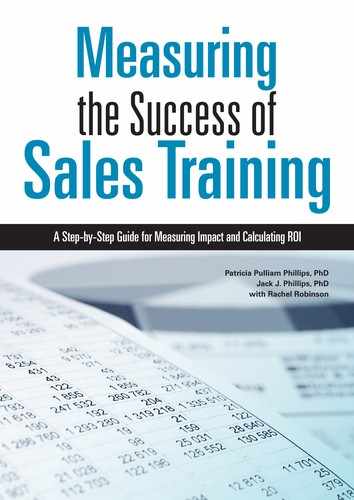0%
23Chapters
0-1Hours read
0kTotal Words
Book Description
It has never been more important to show examples of sales skills at work. The process to evaluate these skills is sometimes perceived as straightforward and routine, simply a matter of tracking the sales gains after the program has been conducted. But credibly Measuring the Success of Sales Training programs is a bit more involved than that. Experts in the practice of ROI measurement, Jack and Patricia Phillips have collected a new book of ROI case studies, with a focus on sales training programs. The case studies presented in this book demonstrate how to use of the ROI Methodology to properly measure the results of sales programs. These studies come from all over the world, in many different disciplines and concentrations, from financial services to the public sector. The use of the ROI Methodology addresses issues that are sometimes omitted from other casebooks. First, since many other factors influence sales, there must always be a step to isolate the effects of the sales training program on the sales (each study features this step). Second, when converting to monetary value, only the profit margins of increased sales must be used, not the sales themselves—a mistake made by many. Third, the stream of monetary benefits for the increased profits must be conservative, usually representing only one year. Sponsors need a credible, conservative approach to measuring ROI—one that meets these challenges. All of the case studies in this book will address these issues, providing examples and benchmarks for others to use to evaluate these important types of programs.Table of Contents
- Cover
- Title
- Copyright
- Content
- Preface
- Part I: The ROI Methodology: A Credible Approach to Evaluating Your Sales Training Programs
- Part II: Evaluation in Action: Case Studies Describing the Evaluation of Sales Training Programs
- Chapter 5 Sales Training Program for Sales Executives
- Chapter 6 Solution Selling for Sales Reps
- Chapter 7 Account Manager Development for a Technical Training Center
- Chapter 8 Simulation-Based Sales Training at a Telecom Company
- Chapter 9 Trustworthy Selling for Commissioned Sales Representatives
- Chapter 10 Coaching Training for First-Level Sales Managers
- Chapter 11 Selling Skills for Postal Stores Staff
- Chapter 12 Selling Skills for Retail Sales Assistants
- About the ROI Institute
- Index
- About the Authors
